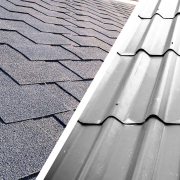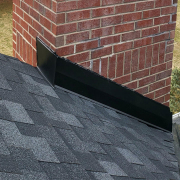How to Shingle a Valley
A Step-by-Step Guide to Properly Shingling Your Roof’s Valleys
A roof valley is a critical area on your roof where two slopes intersect. Properly shingling a roof valley is critical for water runoff and protecting your home from leaks and water damage. While it appears to be a daunting task, with the right tools and techniques, you can learn how to shingle a valley. However, we strongly recommend getting a quote from a professional such as Dream Home to install your roof, but in this guide, we’ll walk you through the steps one by one.
Tools Needed to Complete the Job
You’ll need a set of essential tools to effectively shingle a roof valley. Gather shingles, roofing nails, and a hammer or nail gun for secure attachment. A utility knife comes in handy for the precise cutting of materials. Ensure you have roofing cement and roofing adhesive to seal edges and seams effectively. Also, have roofing felt on hand to provide an additional layer of protection against water infiltration. Having these tools readily available will streamline the shingling process and help achieve a professional result.
Step 1: Prepare the Roof Valley
Before you begin shingling, make sure the roof valley is clean and free of debris. Remove old shingles, nails, and any other impediments. Inspect the valley for signs of damage or decay, and make any needed repairs.
Step 2: Install Roofing Felt
Start by applying roofing felt along the length of the roof valley. Cut the felt to size with a utility knife and secure it with roofing nails or adhesive. This adds an extra layer of protection against water penetration.
Step 3: Start Adding the Shingles
Begin shingling at the bottom of the roof valley and work your way up. Position the first shingle so that it overhangs the valley’s edge by about 1 inch. Secure it in place with roofing nails, making sure the nails are flush with the shingles.
Step 4: Apply Roofing Cement
Apply a thin layer of roofing cement along the edge of the first shingle to seal the seam between the shingle and the valley. This helps prevent water from seeping underneath the shingles and causing leaks.
Step 5: Overlap Your Asphalt Shingles
Continue shingling, overlapping each row of shingles by at least 4 inches. Ensure that each shingle is securely fastened and that the edges are aligned neatly. Trim any excess shingle material as needed with a utility knife.
Step 6: Finish the Valley
Once you reach the top of the roof valley, trim the final shingle to fit and secure it in place with roofing nails or adhesive. Apply roofing cement along the edges to seal any gaps and ensure a watertight seal.
Step 7: Inspect and Clean Up
After completing the shingling process, thoroughly inspect the roof valley for any missed nails, loose shingles, or other imperfections. Clean up any debris or leftover materials from the work area to prevent accidents and maintain a tidy workspace.
Get a Quote from a Local Roofer to Do the Job Right
For professional assistance with roof replacement in New Jersey, Southeastern PA, and Eastern Maryland, contact the expert roofers at Dream Home. With our experience and expertise, we can provide you with an honest and reliable quote and ensure that your roof is in excellent condition for years to come. Protect your investment and home with quality roofing services from Dream Home, and reach out to us if you’re wondering how to shingle a valley.






